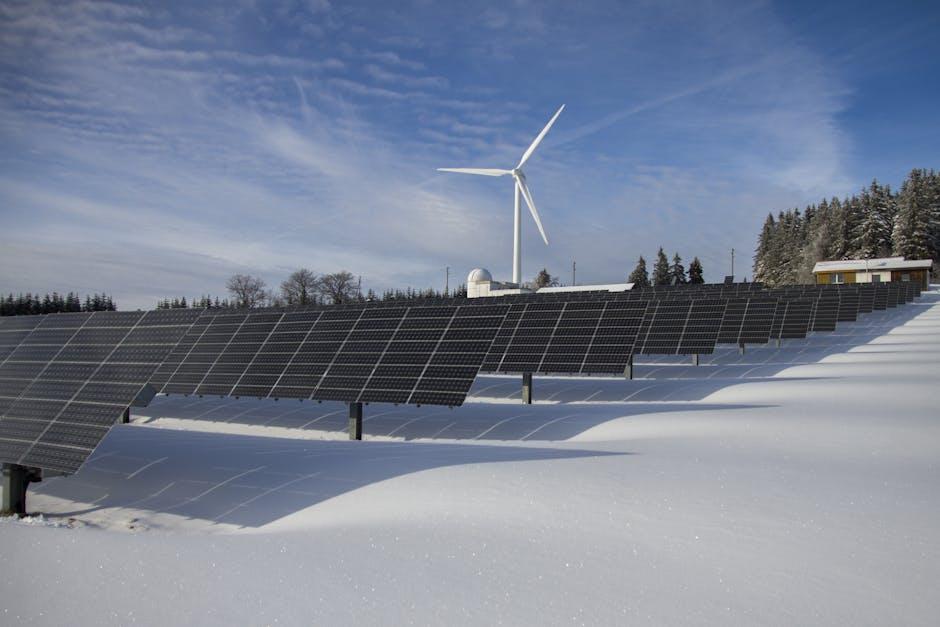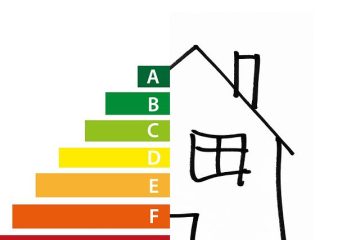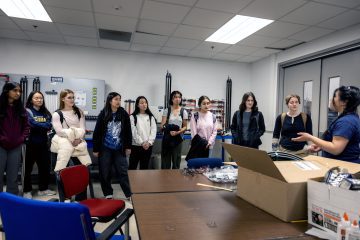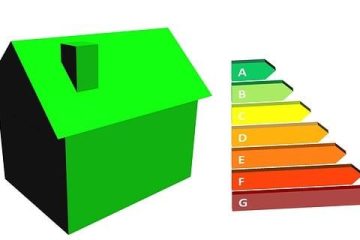Table of Contents
- Understanding Energy Efficiency Measures and Their Importance
- Evaluating Energy Audits for Targeted Improvements
- Exploring Renewable Energy Options for Sustainable Solutions
- Implementing Behavioral Changes for Enhanced Energy Savings
- Investing in Smart Technology to Optimize Energy Usage
- Q&A
- Future Outlook
Understanding Energy Efficiency Measures and Their Importance
Energy efficiency measures refer to the strategies and practices aimed at reducing the amount of energy required to provide products and services. Implementing these measures not only helps in decreasing energy consumption but also leads to significant cost savings for homeowners and businesses alike. Key benefits of adopting energy-efficient practices include:
- Lower utility bills
- Reduction in greenhouse gas emissions
- Enhanced comfort in living and working environments
- Increased property values
Common energy efficiency measures encompass a range of improvements, from structural enhancements to advanced technology adoption. These can include upgrading insulation, switching to LED lighting, and utilizing high-efficiency appliances. Furthermore, smart technologies, like programmable thermostats, play a crucial role in optimizing energy usage. Consider the following simple table showcasing some popular energy-efficient upgrades and their potential savings:
| Measure | Estimated Annual Savings |
|---|---|
| Energy-efficient windows | $200 – $500 |
| Heat pump water heaters | $300 – $600 |
| Smart thermostats | $100 – $200 |
The importance of these measures extends beyond mere savings. They contribute significantly to a sustainable future by minimizing energy waste and reliance on fossil fuels. Energy efficiency serves as a critical component in the fight against climate change, as every kilowatt-hour saved is one less that needs to be generated, thereby reducing emissions from power plants. Moreover, by investing in energy-efficient infrastructures, communities are better positioned to meet future energy demands while also fostering economic growth.


Evaluating Energy Audits for Targeted Improvements
Energy audits are invaluable tools that pinpoint inefficiencies in your energy use, offering a blueprint for targeted improvements. By conducting a thorough evaluation, professionals can assess various components of a facility, ranging from lighting and HVAC systems to insulation and windows. This systematic examination helps uncover potential upgrades that can lead to significant energy savings. The first step is to analyze energy consumption patterns, which can often reveal surprising areas where energy is being wasted.
Key elements to focus on during an energy audit include:
- Lighting Efficiency: Upgrading to LED lights can greatly reduce electricity costs.
- HVAC Optimization: Regular maintenance and system upgrades contribute to optimal performance.
- Insulation Quality: Improving insulation can prevent heat loss and enhance comfort.
Once the audit identifies these critical areas, it is essential to prioritize changes based on cost-effectiveness and potential impact. The following table outlines common improvements and their anticipated energy savings:
| Improvement | Estimated Energy Savings (%) | Payback Period (Years) |
|---|---|---|
| LED Lighting Retrofit | 50-70% | 1-2 |
| High-Efficiency HVAC System | 20-40% | 3-5 |
| Insulation Upgrade | 10-30% | 2-4 |
By systematically evaluating these measures, facility managers can make informed decisions that align with their energy efficiency goals, leading to both lower operational costs and a smaller environmental footprint.


Exploring Renewable Energy Options for Sustainable Solutions
As cities and communities strive for sustainability, the shift towards renewable energy sources has become increasingly vital. By embracing solar, wind, and hydropower, we can significantly reduce our carbon footprint and promote cleaner energy solutions. Here are some of the primary options that are gaining momentum worldwide:
- Solar Energy: Utilizing photovoltaic panels can convert sunlight into electricity, offering both residential and commercial users an increasingly affordable alternative.
- Wind Power: Wind turbines harness kinetic energy from wind currents to generate power, often installed in vast farms or in offshore locations to capture optimal wind conditions.
- Hydropower: This involves using flowing water to turn turbines, making it one of the oldest and most reliable forms of renewable energy.
Assessment of these energy forms reveals distinctive benefits and potential challenges. For instance, while solar energy installation might require upfront investment, the long-term savings on utility costs can be significant. In contrast, wind power is heavily dependent on geographical suitability and weather patterns, illustrating the importance of site-specific evaluations. Integrating renewable energy systems can create a resilient infrastructure capable of supporting future energy needs. Below is a summary table outlining key characteristics:
| Renewable Source | Advantages | Challenges |
|---|---|---|
| Solar | Low operating costs, modular installations | Intermittent energy generation |
| Wind | Cost-effective on a large scale | Area and site restrictions |
| Hydropower | Consistent energy production, controllable output | Potential ecological disruption |
Adopting these renewable energy options is not just about answering climate change concerns but also about driving innovation in energy efficiency measures. Communities implementing these solutions can foster local economies, create jobs, and promote environmental stewardship. The future of energy lies in collaboration and willingness to adapt existing infrastructures towards a sustainable path. Embracing renewable energy is a crucial step in realizing a cleaner and more sustainable tomorrow.


Implementing Behavioral Changes for Enhanced Energy Savings
Enhancing energy savings extends beyond merely upgrading appliances or improving insulation; it often requires fundamental changes in daily habits and routines. By fostering a culture of conservation, individuals can significantly reduce their energy consumption while also lowering utility bills. Here are a few essential strategies to initiate this shift:
- Mindful Usage: Always turn off lights and unplug devices when they’re not in use.
- Temperature Management: Setting thermostats responsibly—keeping it cooler in winter and warmer in summer—can yield substantial savings.
- Conscious Commuting: Opting for public transport, biking, or carpooling can drastically lower energy expenditures associated with commuting.
Creating a supportive environment also plays a pivotal role in fostering these behavioral changes. Families can engage in collaborative discussions about energy-efficient practices, rewarding one another for adopting and maintaining these habits. Education is key; sharing information on how small adjustments can lead to larger savings can empower everyone involved. Incorporating technology can further facilitate this transition, such as:
- Smart Thermostats: These devices learn your habits and adjust accordingly for optimized energy use.
- Energy Monitoring Apps: Use applications that track energy expenditure and provide insights into your consumption patterns.
- LED Lighting: Replace traditional bulbs with LED options to reduce energy consumption considerably.
To further illustrate the impact of behavioral changes, consider this simple comparison of energy usage associated with common activities:
| Activity | Traditional Energy Use (kWh) | Energy Efficient Alternative (kWh) |
|---|---|---|
| Leaving Lights On | 120 | 30 |
| Heating Space Inefficiently | 300 | 150 |
| Using Standard Bulbs | 80 | 20 |
This table highlights how strategic changes can lead to remarkable reductions in energy consumption, paving the way for a more sustainable lifestyle.


Investing in Smart Technology to Optimize Energy Usage
Investing in cutting-edge technology has become essential for individuals and organizations striving to enhance energy efficiency. By integrating smart devices and systems, energy usage becomes more manageable and sustainable. Smart thermostats, for instance, learn user preferences and adjust heating and cooling in real time, significantly reducing unnecessary energy consumption. Moreover, smart lighting systems can automatically adjust brightness levels based on occupancy and natural light, optimizing energy use throughout the day.
Beyond individual devices, entire smart home ecosystems can be implemented. These systems offer centralized control over various appliances and resources, allowing users to monitor and manage energy usage effectively. Some advantages of adopting such technologies include:
- Remote Monitoring: Users can track energy consumption from anywhere, leading to more informed decisions.
- Predictive Analysis: Smart technologies can analyze data trends and suggest actionable insights for energy savings.
- Integration with Renewable Sources: Smart systems can seamlessly integrate with solar panels or wind turbines, optimizing energy storage and usage.
Incorporating smart technology into energy management not only benefits users financially but also contributes to broader sustainability goals. By implementing these systems, organizations can track their carbon footprint, engaging in more responsible practices. As energy costs rise and environmental concerns increase, businesses that prioritize smart technology will likely find themselves at the forefront of innovation, maximizing efficiency while reducing operating costs.
Q&A
Q&A on Energy Efficiency Measures
Q1: What are energy efficiency measures?
A1: Energy efficiency measures are strategies and actions designed to reduce energy consumption while maintaining the same level of performance or comfort. This can involve upgrading appliances, improving insulation, utilizing smart technology, and optimizing infrastructure to use less energy in homes, businesses, and industries.Q2: Why are energy efficiency measures important?
A2: Implementing energy efficiency measures is crucial for several reasons. They help lower energy bills, enhance the comfort of living spaces, and decrease the demand on energy resources. Furthermore, these measures can significantly reduce greenhouse gas emissions, contributing to environmental sustainability and combating climate change.Q3: Can you provide examples of common energy efficiency measures?
A3: Absolutely! Some common energy efficiency measures include:- Replacing incandescent light bulbs with LED bulbs, which consume significantly less power.
- Upgrading to Energy Star-rated appliances, which are designed to use less energy without sacrificing quality.
- Enhancing home insulation and sealing leaks to maintain temperature control.
- Installing programmable thermostats to optimize heating and cooling schedules.
- Utilizing energy-efficient windows that minimize heat loss.




0 Comments